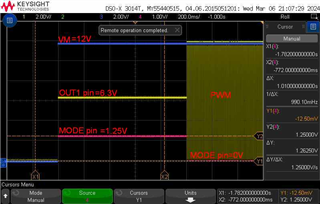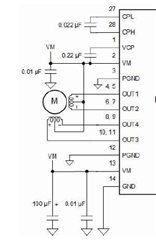Dear All,
we are using the DRV8955 motor driver. We set its MODE to 330kOhm to GND (four independent High-Z, voltage on MODE_1.23V) and IN1-4 and EN1-4 pull to GND.
After that if we pull-up any one output by 1kOhm to VM=12V and on the output can be measured 6,3V. I think it should be 12V because the high-z state. On the oscilloscope all input and out pin are static state.
Do you have any idea?






